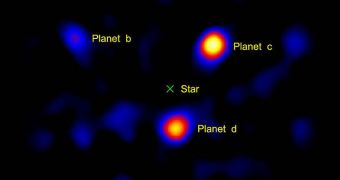As all astronomers know, it's one thing to discover exoplanets orbiting stars outside of our solar system, and another entirely to find planets capable of sustaining life. In truth, the nearly all exoplanets scientists identified thus far are gas giant, some several times larger and heavier than Saturn. The goal of finding a rocky, Earth-like planet around a star in the Milky Way appears to be a long way away. But it's the job of upcoming space telescope to make this dream a reality, AlphaGalileo reports.
The new mission is called PLATO (Planetary Transits and Oscillations of Stars), and will benefit from funding secured via grants from the European Space Agency (ESA). Researchers at the Queen’s University Belfast, in the United kingdom, are also involved in building this next-generation observatory. At this point, ESA is presented with three mission proposals, of which PLATO is definitely one of the most interesting. However, in the near future, officials at the agency will need to select only two of three proposals. The observatories will then be constructed and launched between 2017 and 2020.
PLATO's main goal is to seek out Earth-sized exoplanets that may orbit around stars in the Milky Way. “The discovery of life-bearing planets is one of the major scientific and philosophical challenges of our time and at Queen’s we have been active in this area for many years. Already our SuperWASP experiment, using ground-based telescopes, has discovered 43 exoplanets so far,” explains the principal investigator of the international PLATO Science Consortium, Don Pollacco. He is professor at the Queen School of Maths and Physics, and a professional planet hunter.
“We envisage that the new PLATO spacecraft would be launched between 2017 and 2020, on a Russian Soyuz Fregat rocket. We hope it will be powerful enough to detect rocky planets in the habitable zones of Sun-like stars, those regions around a star where liquid water can exist. In other words, it could find new Earths. Using a suite of space telescopes on a single spacecraft, PLATO would detect these planets by picking up a brief and tiny dimming of light as they pass in front of their stars, blocking their brightness. The mission would focus on solar systems close enough to be scanned for bio-signatures, or signs of life by later missions and ground-based telescopes,” he concludes.

 14 DAY TRIAL //
14 DAY TRIAL //